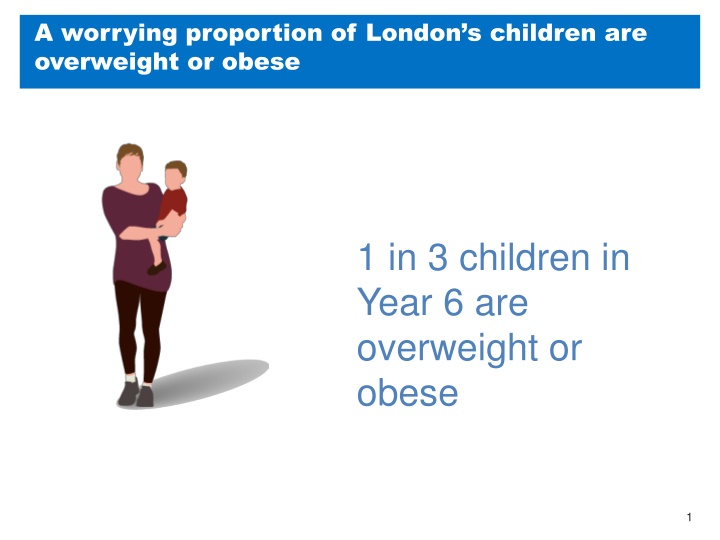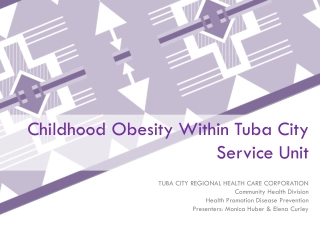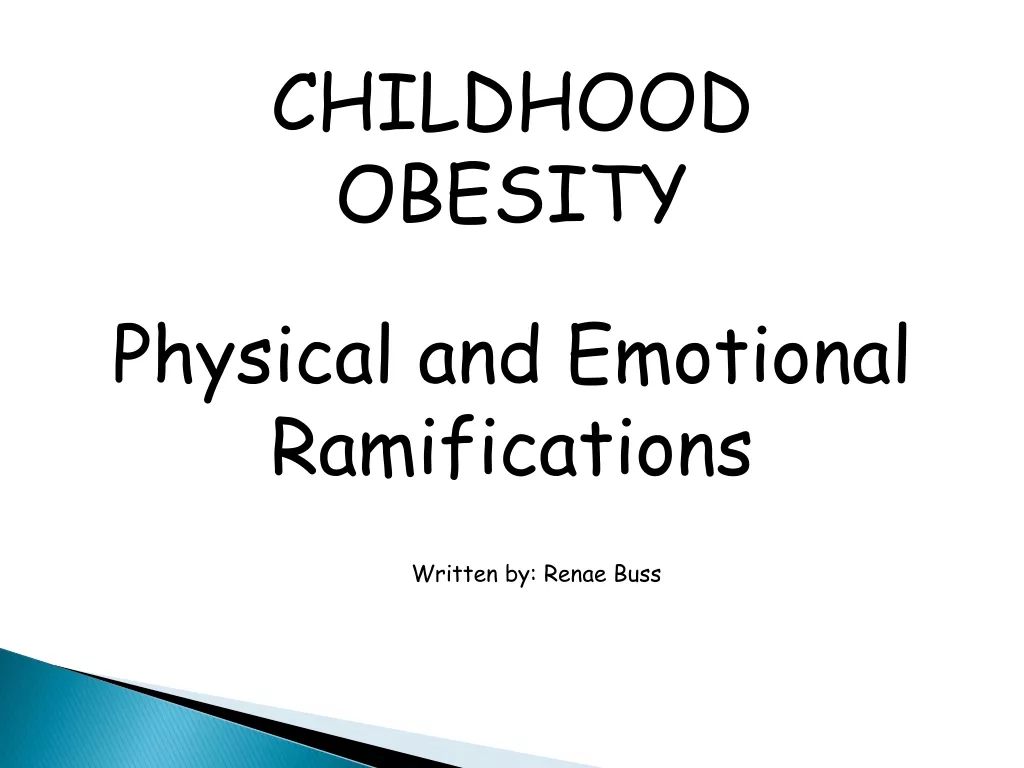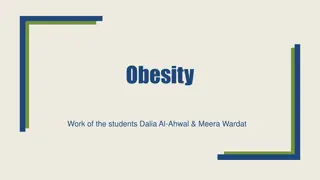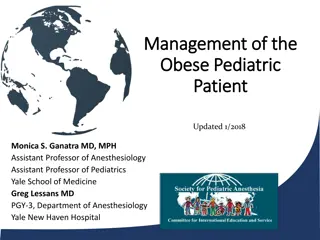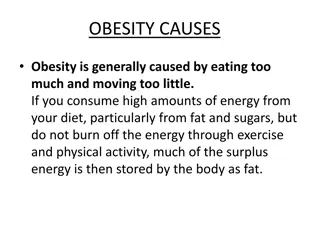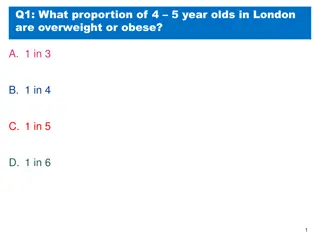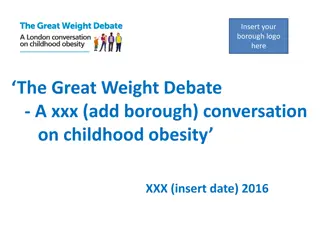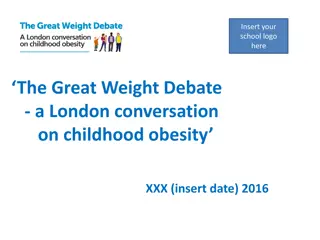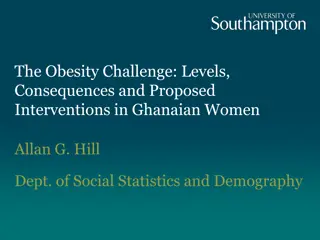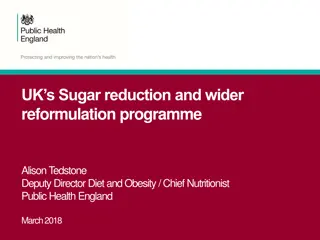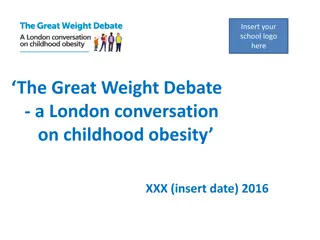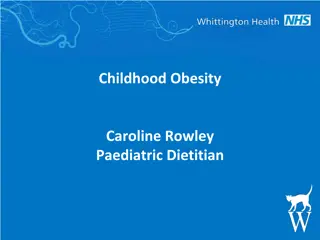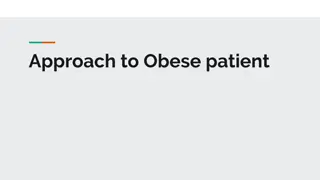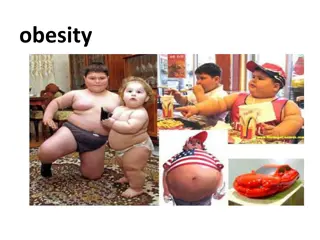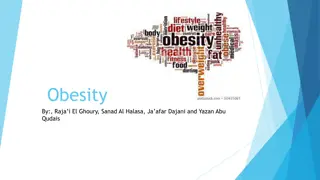Addressing Childhood Obesity: A Call for Action in London
Childhood obesity in London is a significant concern, with 1 in 3 children in Year 6 being overweight or obese. This issue has far-reaching impacts on both children and society, including health problems and increased healthcare costs. Experts attribute the rising obesity rates to environmental and social factors. Considering the success of campaigns against smoking, action at the national, London, and local levels is necessary to combat childhood obesity effectively.
Download Presentation

Please find below an Image/Link to download the presentation.
The content on the website is provided AS IS for your information and personal use only. It may not be sold, licensed, or shared on other websites without obtaining consent from the author.If you encounter any issues during the download, it is possible that the publisher has removed the file from their server.
You are allowed to download the files provided on this website for personal or commercial use, subject to the condition that they are used lawfully. All files are the property of their respective owners.
The content on the website is provided AS IS for your information and personal use only. It may not be sold, licensed, or shared on other websites without obtaining consent from the author.
E N D
Presentation Transcript
A worrying proportion of Londons children are overweight or obese 1 in 3 children in Year 6 are overweight or obese 1
Childhood obesity has a big impact on children and local communities Impact on children Associated with asthma and other respiratory conditions Linked to early puberty Linked to some cancers Twice as likely to develop type 2 diabetes Linked to psychological disorders e.g. anxiety, poor self-esteem and eating disorders More likely to be bullied Impact on society If remain obese into adulthood, will have a lower life expectancy than adults who are not obese Adult obesity costs the NHS 4.2 billion / year Associated with reduced productivity in the workplace 2
Experts agree that the causes of childhood obesity are environmental and social Most experts agree that rising childhood obesity rates are caused by a combination of a number of environmental and social factors, for example: Widespread availability of cheap, high calorie food (e.g. fast food outlets, fizzy drinks) Larger portion sizes than in the past Marketing of unhealthy foods to children Confusion about what the healthiest food options are for their children amongst parents Lack of understanding of what a normal weight is for a child City environment discouraging walking / cycling Whilst people also make choices about what they eat, and what they feed their children, these choices are affected by the environment in which they live. Today we are going to focus on these wider, environmental factors, rather than the issue of personal responsibility. 3
We know from the campaign against smoking that changing behaviour requires action at a number of levels 2007: Legal age at which you can purchase tobacco raised to 18 1988: IBM announces it is making its 60 UK buildings smoke free 1997: Tobacco sponsorship of sport banned 2012: 4% of 11 15 year olds in England are regular smokers 1988: Smoking and me an educational campaign aimed at 12 13 year olds launched 2007: Smoking in public places banned 2004: British Heart Foundation s anti- smoking campaign hailed as a success 1993: 10% of 11 15 year olds in England are regular smokers 2008: Picture warnings on cigarette packs compulsory 1987: London Underground bans smoking and cigarette advertising across its network 2015: Smoking in cars with children under 18 present banned 4
We therefore want to think about action at three levels 1. National level 2. London level 3. Borough / local community level 5
The London Association of Directors of Public Health have set out areas in which we could take action on childhood obesity The Association of Directors of Public Health (ADPH) is the representative body for directors working in public health The London ADPH has developed a framework for how we might tackle childhood obesity The framework sets out all the areas in which action might be taken We will be using this framework as we develop ideas for how to tackle childhood obesity 6
The framework sets out 12 areas in which action could be taken Breastfeeding Weaning Accessibility of healthy food Journeys by foot or by bike Physical environment (e.g. safety on the streets, access to green spaces) Supporting people to be active Schools Public and community settings (e.g. youth centres, catering contracts in public services) Health services Workplaces Engagement and commitment (e.g. making sure different groups work together) Knowledge 7
At the moment, London is doing better in some of these areas than others Breastfeeding Weaning X X Accessibility of healthy food Journeys by foot or by bike Physical environment Supporting people to be active Schools Public and community settings Health services X Workplaces X X Engagement and commitment Knowledge 8
At the moment, London is doing better in some of these areas than others Strategies and Priorities 90% Evaluation Breastfeeding 80% 70% 60% Knowledge Weaning 50% 40% 30% Engagment and Commitment Accessibility of Healthy Food 20% 10% Average 0% Workplaces Journeys by foot or bike Health Services Physical Environment Public and Community Settings Supporting people to be active Schools 9
